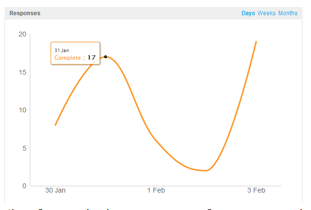Over one hundred customers were online, poised to hear the webinar.
Moments like this can be business magic, but they come together in very earthly ways. Done right, marketing events begin with a sales goal, proceed to identification of a target customer group and creation of a prospect list. Literature and phone scripts are developed for a series of calls and mailings to bring attendees to the event. The best conferencing service is engaged at considerable cost. And the presentation itself requires considerable effort and expense to prepare.
Over one hundred customers were online, poised to hear the webinar.
Moments like this can be business magic, but they come together in very earthly ways. Done right, marketing events begin with a sales goal, proceed to identification of a target customer group and creation of a prospect list. Literature and phone scripts are developed for a series of calls and mailings to bring attendees to the event. The best conferencing service is engaged at considerable cost. And the presentation itself requires considerable effort and expense to prepare.
The moderator welcomed the audience and introduced the speaker.
Each attendee is a valuable resource, with the power to purchase the product showcased in the presentation. The presence of each person is the result of a chain of actions requiring effort and expense to bring together.
The speaker opened the presentation, spoke a few words, and then… nothing. No sound, no images, no communication at all. The webinar came to a silent and mysterious end.
All at once, the effort and expense of planning, preparing and luring an audience were lost. There would be no presentation, and there would be no sales. There would only be the mystery – what caused the sudden failure of the web conference, and how could this be prevented from happening again?
The truth, when it came out, was hard to take. The conferencing service had not failed. The phone lines had not failed. No, at just that moment, in the middle of the business day with customers online and ready for the pitch, IT chose to restart a server, bringing company-wide internet activity to a stop.
But, hey, it was only for a moment, right? What’s the big deal?
There’s a gulf between IT and other business areas. From the standpoint of IT, it can seem like other groups don’t “get it” and have unreasonable expectations. From the standpoint of sales and marketing, it can seem like IT doesn’t “get it” and has little regard for the business overall. And when it comes to data analysts and IT, the two groups have about as much rapport as Coyote and Roadrunner.
Several Smart Data Collective bloggers have written about conflict between IT and other business areas. Recent posts on this topic include:
The Wall Dividing IT and Users by Gary Cokins
The three legged stool – business, analytics, IT by James Taylor
The Business versus IT—Tear down this wall! by Jim Harris
What divides IT from other parts of the business? Nothing that can’t be overcome.
Take the story above, for example. The sales and marketing staff required continuous internet support for the webinar. Yet the planning process never included a specific discussion of that fact, and IT was never invited to participate in the event planning process. IT staff knew that internet servers were there for a purpose. Yet IT staff chose to restart the internet server without first accurately accounting for the impact of that choice, and without providing notice so that other departments could raise concerns.
How much effort has your organization made to train IT in the workings of the business? How often and how early is IT included in project planning?
Data analysts often have extremely poor working relationships with IT. Indeed, if you haven’t encountered analysts making end runs around IT to obtain data, subverting software procurement processes and leaving work poorly documented, you have led a sheltered life.
At the same time, neither IT staff nor leadership has adequate understanding of the value or workings of statistics, data mining or other analytics. It’s common for IT to delete valuable data on the grounds that nobody will need it, to insist that analysis be conducted after-hours, or to maintain processes so cumbersome that analysts cannot meet the requirements of the business.
We can’t go on like this.
Analysts – your finest predictive models are worthless until they are effectively integrated into everyday business operations.
IT – the CEO has been reading the latest gee-whiz business book on analytics. Help make that vision a reality, and you’ll make yourself a hero.
In other words, analysts and IT, you need each other, and now is the time to build bridges.
In a 2009 IBM survey, more than 2,500 chief information officers from around the world were asked, “What kind of visionary plans do you have for increased competitiveness?” The number one response? Eighty-three percent of these CIOs identified analytics as a priority. In other words, IT leadership is beginning to understand that it is time to make nice with analysts.
However, very few CIOs have had any significant analytics training. Lack of understanding of analytics leaves IT with some very significant misunderstandings about what support data analysts require. So far, education has led IT leadership to an understanding that analytics is important. Now it is time to open communication channels and expand education to deepen understanding of why analytics is valuable and how to realize that value.
If you’re an analyst, today is the day to have lunch with your IT guy or gal. Open a channel of communication. Be a person and not just a “support case”.
If you’re in IT, start asking questions. Do you really understand what brings revenue into your company? What makes one prospect buy, but not another? Why one account is profitable while another is not?
What divides IT from other parts of the business? Nothing that can’t be overcome. Communication and education are the building blocks of the bridge between IT and analysts. Now is the time to start building that bridge. Make the first move today.
© 2010 Meta S. Brown







